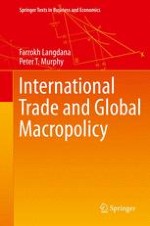2014 | OriginalPaper | Buchkapitel
7. Global Macroeconomics
verfasst von : Farrokh Langdana, Peter T. Murphy
Erschienen in: International Trade and Global Macropolicy
Verlag: Springer New York
Aktivieren Sie unsere intelligente Suche, um passende Fachinhalte oder Patente zu finden.
Wählen Sie Textabschnitte aus um mit Künstlicher Intelligenz passenden Patente zu finden. powered by
Markieren Sie Textabschnitte, um KI-gestützt weitere passende Inhalte zu finden. powered by
